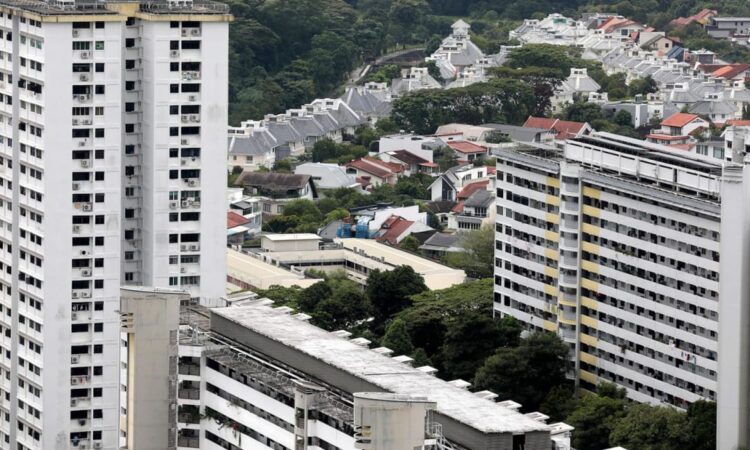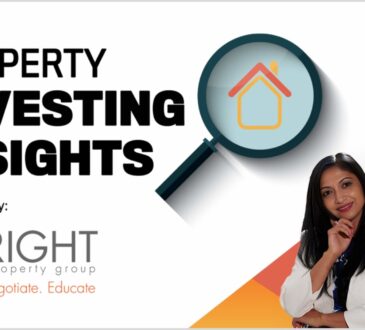Commentary: Will higher property tax rates hurt investment returns in the residential market?

The Ministry of Finance will increase the property tax rate with effect from Jan 1, 2024, as the second and final step of the revisions announced in the 2022 Budget. The Government also announced on Nov 30 that it will give a one-off tax rebate for owner-occupied homes to help homeowners offset this rise in taxes.
The tax rates at the highest-tiered annual value (AV) of above S$100,000 for owner-occupied residential properties will increase from 23 per cent in 2023 to 32 per cent, an increase of nine percentage points.
The tax rate for the highest-tiered AV above S$60,000 for non-owner-occupied residential properties will also increase by nine percentage points from 27 per cent to 36 per cent.
Property taxes are a form of wealth tax in Singapore. The immobile nature of properties makes tax collection more efficient and transparent.
The tiering of property tax rates at different AV thresholds is to ensure progressivity in the tax system, so that higher property tax is levied on owners of more expensive properties. In other words, individuals with higher asset wealth will contribute more to the state coffers by paying higher taxes.
The progressive property tax rates were implemented in 2010 to replace the flat rates of 4 per cent for owner-occupied and 10 per cent for investment (non-owner-occupied) residential properties. The flat rate of 10 per cent is still applicable to other non-residential properties.
How, then, will the increase in tax rates from 2024 impact property investors?
PROPERTY TAX IN SINGAPORE
In Singapore’s property tax system, annual value is based on the annual gross rent of an unfurnished property that is expected to be let from year to year.
The term “gross” means the rent payable covers expenses of repair, insurance, maintenance or upkeep, and all taxes (other than goods and services tax).
The term “let from year to year” means that property tax is payable regardless of whether a property is occupied, rented out, or left vacant.
Two other systems used in other countries are the capital value and site value systems. As with Singapore’s AV system, each has its own merits and demerits.
The site value system will tax a vacant land value. The capital value system will tax the combined value of land and a building thereon.
The site value system encourages landowners to develop their lands instead of keeping them vacant. When applied to developed land with structure thereon, assessors will need to separate the building value and the land value. However, it is difficult to apportion the land value to different owners in multi-owner properties for tax purposes.
Technically, a taller building has a higher value, and it also generates more rental revenue. In the capital value and AV systems, the tax base values are higher if a taller building (higher density) is built on the land.
In countries with abundant land, these two systems discourage property owners from intensifying land. Instead, they may construct small detached houses on a large tract of land – this phenomenon is common in countries such as the United States.
However, in land-scarce countries such as Singapore, the economic value of intensifying land with a taller building outweighs property tax cost increases associated with the taller building. Therefore, the capital value and AV systems will not lead to sub-optimisation and under-utilisation of land.
The AV system is more suitable for Singapore’s market because residential properties are relatively homogenous by nature. Rental data is readily available, and rental rates are also less volatile compared to the capital value (sale prices) of property.
The same AV system has been adopted in the United Kingdom and other Commonwealth countries, including India, Hong Kong, and Malaysia. In these countries, property tax is chargeable to tenants and occupiers, whereas in Singapore, property owners are responsible for paying property taxes.
In Singapore, there are provisions in the Property Tax Act that give the Chief Assessor an option to assess AV based on a standard rate of 5 per cent of capital value and/or site value, usually for vacant or under-developed land and specialised properties with no rental evidence.
POSSIBLE IMPACT ON PROPERTY MARKETS
Higher property tax rates will increase owners’ holding costs, in addition to paying higher financing costs caused by rising interest rates since 2022.
For investors/landlords, property tax increases add to the expenses of investing in private properties. In a tight rental market with more tenants chasing after limited rental units, as seen in the last two years, landlords could pass on increases in property tax costs to tenants and consequently push up rental rates.
However, with an expected completion of 20,400 units of private residential properties in 2023 and about 23,800 Housing and Development Board flats completed between April 2022 and March 2023, the new supply will significantly ease the tight supply conditions.
In an optimistic scenario, landlords who face keen competition could still find new tenants to fill up their rental units and keep rents unchanged. However, they will have no choice but to absorb the costs of property tax increases.
Otherwise, they face the risk of not being able to rent out their properties, and will still have to pay higher non-owner-occupied property taxes even if their properties are left vacant.
Some argue that investors could expect price appreciations in property investments to offset the lower stream of net rental cash flows.
If that is the case, housing prices should grow at an even higher rate to make up for the declines in cash flows so as to keep the same rate of return for the investors.
Given that private property prices have already grown by 26 per cent and the public market by 31 per cent from the second quarter of 2022 to Q3 2023, how much more headroom would there be for growth in housing prices?
A DOUBLE WHAMMY WITH RISING PROPERTY TAX COSTS
Property rents are dependent on factors such as location and property attributes, as well as demand-supply conditions in the markets. For example, a property located near an MRT station and with nice interior fittings will command a higher rent.
Property that can be let at a higher rent will be sold for a high price. Similarly, lower rents are capitalised into lower selling prices.
In other words, investors are less willing to pay higher prices for property that generates lower rents.
However, the reverse is less likely. Investors cannot ask for higher rentals just because they pay higher prices for their properties.
Rental prices are driven more by the economics of demand and supply.
With a strong pipeline of new unit completions, landlords will face more competition in finding prospective tenants for their properties.
If no new demand drivers are found in the rental markets, the “bid-ask spread” in the rental market would widen.
The “bid” (demand) represents the highest rent a tenant is willing to pay, and the “ask” (supply) represents the lowest rent a landlord will expect in letting a property.
A larger bid-ask spread is an indicator of lower market liquidity, which occurs if fewer tenants are willing to match landlords’ asking rents. When friction increases in an illiquid rental market, more properties will be left vacant.
The rising vacancy rate and the decreasing rents will be a double whammy for investors. Property investors will not only face the pressure of having to reduce rents to attract tenants to fill their properties, but they will also have to bear higher property tax costs in the years ahead.
ABOUT THE AUTHOR:
Sing Tien Foo is the Provost’s Chair Professor at the Department of Real Estate, NUS Business School, National University of Singapore. The views represented here are his own.




